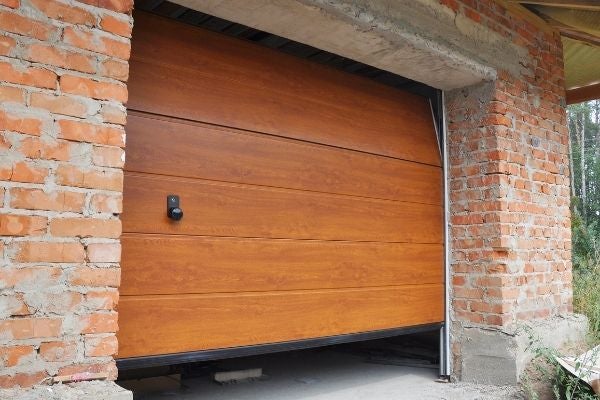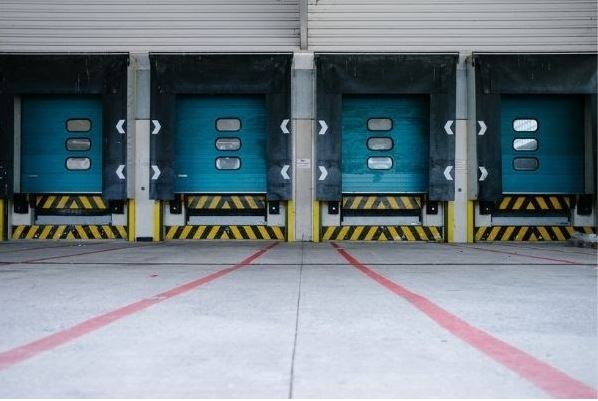-
4 Benefits of Upgrading to an Insulated Garage Door

Garage doors serve many purposes. They secure our homes by locking out intruders, they keep animals out, and they create a protected space for our vehicles and other belongings by sheltering them from the weather. While just about any kind of a garage door can suffice, there are things that insulated garage doors do that go beyond protecting our homes and the possessions inside.
Here are some reasons to consider upgrading to an insulated garage door.
- Insulated Garage Doors Make Less Noise – Non-insulated lightweight doors often make the most noise. This can be an issue for people trying to sleep or work in rooms located directly over the garage or next to it. Insulated doors are heavier and the panels are made of tightly bonded materials, so they vibrate less when moving up or down along the track. They can also help to block more noise from the area surrounding your home.
- Insulated Garage Doors Last Longer – Since the panels are constructed from layered materials, they are stronger and more durable than non-insulated doors. Older style garage door panels are made by wrapping thin sheets of steel over the panel frames, which makes them essentially hollow. They can be easily dented or damaged when hit by a car, a bicycle, or even a basketball or football. A dented garage door takes away from your home’s curb appeal and value. With an insulated garage door, you can ensure the value of that garage door for years to come.
- Insulated Garage Doors Save You Money – An insulated garage door will hold more heat inside your garage and therefore, your home. This means that less heat is lost from your home through the garage and your furnace won’t have to work harder to compensate for it. Your insulated garage door will save you money on your heating bills each month.
- Insulated Garage Doors Protect Your Car – Cold weather affects cars in adverse ways, such as decreasing the air pressure in tires, thickening engine and brake fluids, and causing the battery to have a harder time starting the vehicle. An insulated door can raise the temperature inside the garage to about 42° F when the temperature outside is 20°F. Car batteries work best at temperatures between 30 and 90° F. Upgrading to an insulated garage door protects some of your biggest investments, your home and your vehicle.
Choosing the right insulated garage door for your home involves knowing which materials would provide the best value and style. An experienced garage door installation company like Thomas V. Giel Garage Doors, Inc., can show you the available options and help you make an excellent choice.
-
Different Types of Commercial Doors and Their Uses

Function is key when it comes to choosing doors for your commercial business facility. Aesthetic concerns aside, it can be difficult to choose the right door from among all the styles available. Factors such as the purpose, speed of operation desired, and heavy or light usage all help determine which door will best fit your commercial needs.
Let’s take a look at several available types of commercial doors.
- Rolling Steel and Fire Doors – These kinds of doors are made of steel and are intended to activate automatically in the event of smoke or fire. The purpose is to keep smoke and fire from spreading into other areas of the building to allow for safety of personnel and extinguishment of the fire. They have intumescent coatings, which is a fancy way of saying that the linings around the door frames swell up in heat so that the fire can be contained. You will need extra guidance from a professional installer to determine the fire rating you will need for each door.
- Sectional Garage Doors – These commercial garage doors are made of separate panels that are raised and lowered by a torsion spring system and can be operated by garage door openers or manually. They can be insulated and incorporate clear panels or smaller windows as needed.
- High-Speed and Special Function Doors – The springless design of high-speed doors allows them to open and close safely and quickly to maintain speed of production, safety, and separation of work areas.
- Security Gates and Grilles – Necessary for store fronts, kiosks, and other retail applications, security gates offer visibility and ventilation along with increased security. They can be motorized or operated manually and stored out of sight for convenience. A skilled installer can help you determine a curtain pattern and style that is right for your business.
- Man Doors – Offering a wider range of aesthetic options, man doors can be made out of metal or fiberglass with an array of hardware and exterior coating choices.
Professional experienced installers from Thomas V. Giel Garage Doors, Inc. not only help you choose the correct door but also any additional equipment and accessories. To maintain safety, security, and efficiency, loading dock areas need essential equipment including levelers and lifts, dock seals and bumpers, and accessories like fans, lights, truck restraints, and impact guards. You can also find door openers, keypads, card readers, and even parking arms and gate openers for your facility.
Your commercial doors can be functional as well as give your business a professional appearance.
-
Common Garage Door Terms You Should Know

Using a garage door is as much a part of our everyday lives as preparing food or taking showers. On average, garage doors are used three to five times per day or 1,500 times each year. Garage doors utilize different kinds of springs which are built to last between 5,000 to 20,000 cycles. A cycle represents each time the door is opened and closed. These figures mean that your garage door may remain problem-free for three to 13 years. Since more usage equals greater wear and tear, the need to replace or repair your garage door is inevitable.
Being well-versed in how your garage door works and the components that make it possible is essential if you need to describe the problem to a garage door service professional. You may be interested in learning so you can make the repairs yourself, but as you read through this information, you’ll see why that isn’t recommended.
Garage door assemblies are complicated and there are many small parts and accompanying definitions, so we will introduce you to only the most essential working parts that you should know.
These terms have to do with how the garage door is raised and lowered.
- Garage Door Track – also called the rails, these are the vertical metal tracks attached to the outsides of the garage door opening and the horizontal ones attached to the ceiling that hold the garage door in place.
- Rollers – found inside the track and made of various materials, they allow the door to roll smoothly up and down inside the door track.
- Cable Drum or Drum – also known as a spool, the drums are mounted above the door on each side and balanced using torsion spring systems. There will be one on the right side and one on the left side.
- Pulley – these are located at the ends of the extension springs and mounted on the top corners of the track assembly
- Lift Cable – the lift cable can be attached two ways depending on the spring system. For an extension spring, it will be found inside the pulleys. For a torsion spring, it will be attached to the cable drum assembly. The lift cable works with the spring system to lift the door.
- Extension or Stretch Spring – this type is suspended over the horizontal track and is controlled by the lift cable.
- Torsion Spring – mounted along with the cable drums and above the door on a pipe or shaft, it uses torque (twisting force) to balance the door weight as it is lifted and lowered.
- Retaining or Safety Cable – used with extension spring systems, it runs through the center of the spring and helps keep the door from falling if one of the system components fails.
The next set of terms applies to how the garage door is assembled.
- Panels and Hinges – the individual portions of the door are called panels and are connected with hinges that allow them to flow through the curved portions of the door track.
- Top Fixture – just like it sounds, it mounts onto the top section of the door to attach it to the opener.
- Bottom Fixture – these are mounted onto the bottom sections of the door and hold the lift cables. The lift cables are under extreme tension. That’s why they should only be removed or repaired by a qualified installer. A cut or loose cable can cause severe physical injury.
- Astragal – this is the weather-stripping material that runs along the bottom of the door to seal gaps.
This final set of terms applies to the garage door opener. Whether your opener uses a screw, belt, or chain drive, it will operate in the same manner.
- Circuit Board – the brain of the opener, it processes the commands from the controls to open and close the door.
- Safety Beam or Photocell – these are mounted on both sides near the bottom of the door and complete the circuit that makes the door operate. It stops the door when a blockage is detected.
When your garage door is malfunctioning, it will be helpful to use these terms when describing the problem to a repair technician.
If you need garage door parts or a new garage door, call a qualified insured repair service like Thomas V. Giel Garage Doors, Inc., to safely get your door back into top working condition.
